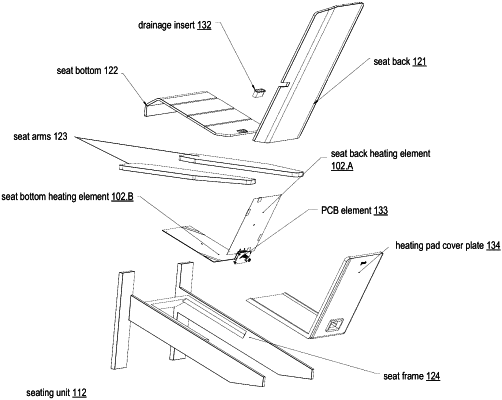| CPC A47C 7/748 (2013.01) | 19 Claims |

|
1. A seating unit comprising:
a seat back having a front side and a back side;
a seat bottom having a top side and an underside;
a first heating element, attached to the back side of the seat back, and configured to deliver first heating through the seat back to a user while seated in the seating unit when electrically powered;
a second heating element, attached to the underside of the seat bottom, and configured to deliver second heating through the seat bottom to the user while seated in the seating unit when electrically powered;
circuitry configured to facilitate delivery of power to the first heating element and the second heating element; and
a removable drainage insert;
wherein the seating unit is configured to be positioned upon a planar surface for seating by the user;
wherein the seat bottom comprises a front end and a back end, wherein the front end of the seat bottom is a first distance from the planar surface when the seating unit rests upon the planar surface, wherein the back end of the seat bottom is a second distance from the planar surface when the seating unit is positioned upon the planar surface, and wherein the second distance is smaller than the first distance;
wherein the seat bottom comprises a drainage insert cavity at the back end of the seat bottom, wherein the removable drainage insert configured to be secured within the drainage insert cavity, and wherein the removable drainage insert is further configured to collect precipitation landing upon the seat bottom based on flowing of the precipitation from the front end to the back end based on the second distance being smaller than the first distance.
|